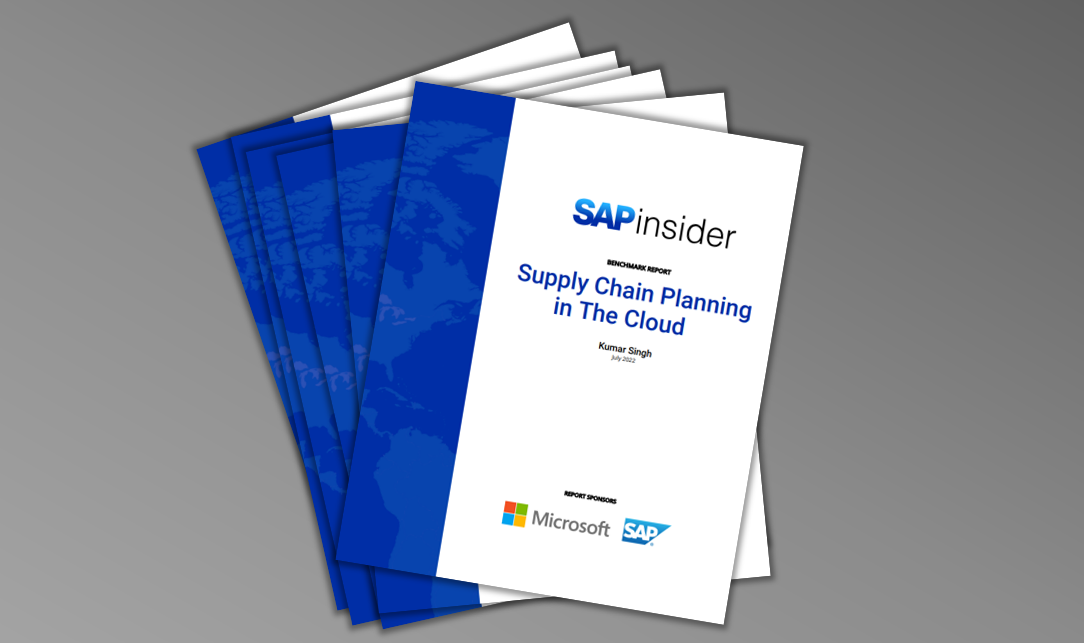Understanding Why “Agile SAP” Is Not a Contradiction
Meet the Experts
By Martin Rowan, Managing Partner, Reveal
We all depend on supply chains to get us what we need, when we need it. If the COVID-19 pandemic has given us anything—aside from a heart-breaking toll on humanity and the sacrifice of frontline workers—it is clarity on the critical role supply chains play in all aspects of our lives. The status of the supply chain has risen, becoming an unlikely hero in every part of the world and an indispensable link to both commercial success and benevolent good. This pandemic has shined a light on the importance and criticality of the supply chain and on the components that need to be in place to keep businesses running.
During this time of desperation, we find these to be some of the most important components that help keep the supply chain running:
CASH. AGILITY. TRUST. TALENT.
Cash. All businesses depend on cash to operate, but so much of it is tied up in working capital (inventory). It is not uncommon to find 50% of average inventory not turning due to excessive levels of buffer stock. In other circumstances, there is not enough inventory to meet demand spikes that would typically be used to generate more cash (profit). Inventory can be the villain or the hero in the supply chains. Supply chains either produce it, buy it, store it, or ship it. Inventory can be the first sign that the supply chain is inefficient—a double-edged sword, so to speak (hero meets villain).
Agility. Not to be confused with flexibility, or the ability to do whatever you want, when you want. Agility, rather, is the speed at which you are able to adapt the end-to-end supply chain to meet split-second changes to market conditions. The COVID-19 pandemic has challenged supply chains to be agile. Agility is based on predictability; when there is predictability in the supply chain processes, you can quickly make changes knowing how the supply chain is going to respond.
Trust. Not being able to trust data causes delays in organization response times. This has become very apparent during this pandemic. Ideally, supply chains operate off a single source of the truth, like real-time data produced from SAP. Real-time data is an accurate representation of your real-world supply chain. Trustworthy data supports agility and confidence to react quickly to supply chain fluctuations.
Talent. The human factor is the most important, and often the most forgotten, component of the supply chain. Few supply chains are as robotic and automated as those of Amazon. The human ability to think critically when faced with challenges is still the biggest x-factor in the success of supply chain operations. To continue the hero analogy, critical thinking is to supply chain operations as a cape is to the superhero; without the human component, the supply chain will start to break down and become incomplete, just as a superhero cannot be effective without his or her essential costume. Preventative activities such as social distancing and increased remote work have limited opportunities for employees to contribute inside production facilities, warehouses, and loading docks, leading to a slowdown in the ability of many supply chains to be agile, make quick decisions, and perform at their peak.
The crisis has uncovered weaknesses in supply chain operations that, pre-COVID-19, were considered acceptable. This makes me wonder, had companies become complacent and comfortable with mediocre performance and content with their supply chains being just good enough?
Why Do Organizations Not See SAP as an Asset?
A supply chain missing even just one of the components mentioned earlier (cash, agility, trust, talent) can cause mediocre performance. When organizations are trying to operate a supply chain in spreadsheets, it eliminates process integration, end-to-end visibility, limits automaton, and creates siloes in the business. Running the operation in spreadsheets leads to a lack of trust in the data that is supposed to produce an accurate representation of your supply chain in real time.
At Reveal, experience has shown us that more than 90% of businesses that run sophisticated ERP software systems, like SAP, are still dependent on spreadsheets as various sources of truth. As a result, they give up on organizational agility and replace it with individual flexibility.
Furthermore, these organizations don’t manage the reality of their business in the system, causing them to add system buffers in lead-times, people, and inventory to cover-up the differences between the real world and the reality of the supply chain system’s version. These buffers lead to more cost, less cash, and, eventually, less agility.
How does this even happen? Organizations that run SAP have the technology to be able to establish a single source of the truth. However, in our experience, many companies have implemented SAP with operations and supply chains as after-thoughts. Finance usually being the primary driver for implementing SAP, the usage for the remaining SAP functions becomes the means to support finance recording requirements.
This leads organizations to think of SAP as a tool, not an asset. What follows is a culture where every improvement related to SAP is classified as a project and associated with a return on investment. The words uttered are somewhat similar to, “This project costs $ and I will get a return of $$$ from this new functionality, enhancement, or module.” When seen as an asset, the discussion instead turns to, “What can be done with this asset to increase utilization and drive value into the entire organization/value chain on a continual basis?”
How One Company Turned Their ERP From a Tool into an Asset
An example of a supply chain that rose above “good enough” is Minuteman International, a global manufacturer of industrial cleaning equipment. This organization was challenged with too much inventory, operational inefficiencies, and a lack of trust in their SAP system/data. Initially Minuteman saw and used SAP only as a data repository tool. The company could not turn the data into information or turn that information into insights that could ultimately improve their business. To run the business, they had to extract information from their SAP system and into a spreadsheet.
It took strong leadership to recognize these challenges, which resulted in a transformation initiative to raise the level of SAP utilization and maturity. The company educated its employees on how to use standard SAP, eliminated spreadsheets and system customizations, and leveraged the data to make business decisions. The result? Minuteman became demand driven and exception focused.
After a concerted cross functional effort, the company was able to improve on all performance metrics defined at the beginning of the initiative. Within 9 months, Minuteman improved inventory turns significantly, leading to a reduction in average inventory by 25%. “Our parent company still speaks about how, in such a short period of time, we were able to reduce working capital requirement while growing our business year on year,” said Steve Boebel, CFO of Minuteman International.
In addition to the business results achieved from Minuteman’s transformation, the organization became better prepared to address the pressures caused by the COVID-19 crisis. The company was able to remain agile and proactive in managing its supply chain and business when the pandemic hit without major disruption. This had everything to do with the organization and supply chain’s ability to use the data and system to address market changes.
Many companies, by contrast, are dealing with supply chain and operational disruptions with pure grit and hard work. In Minuteman’s case, the demand for cleaning products increased and the need for industrial equipment decreased, effecting their “normal” product allocation and mix radically. However, with minor changes to the demand signals and associated master data, the organization (which trusts its data, knows how to react to the alerts, and responds accordingly) was able to adjust to the changes without a herculean effort. Minuteman allowed the system and the data to drive the actions and decisions to meet the changing market demands.
Hear more lessons learned during my session at SAPinsider’s Supply Chain Virtual Summit, November 17-18, “Post-COVID: Lessons learned from the crisis and how our supply chains need to change.”









